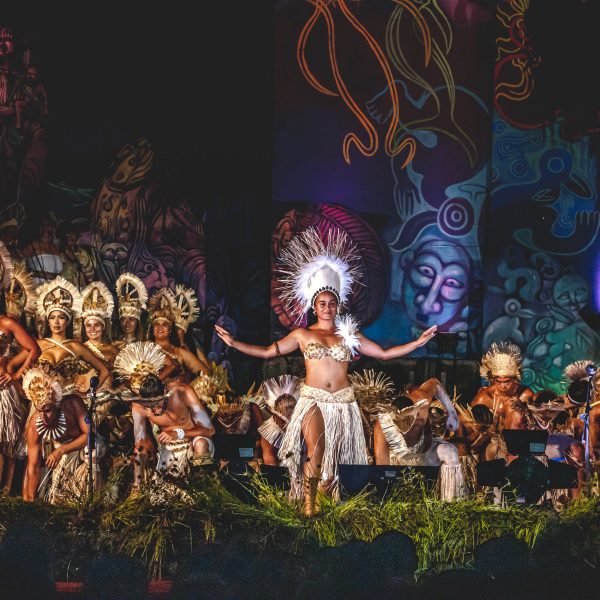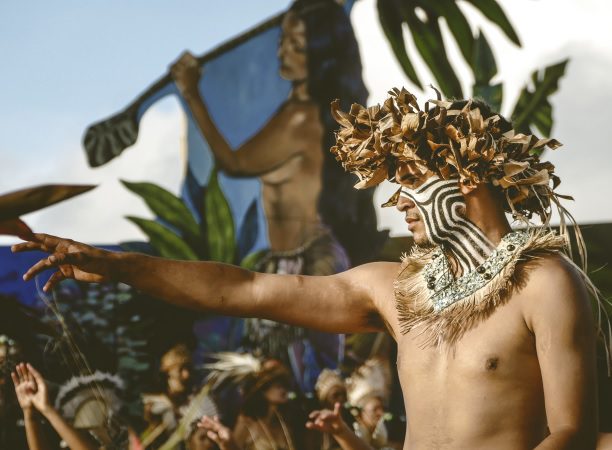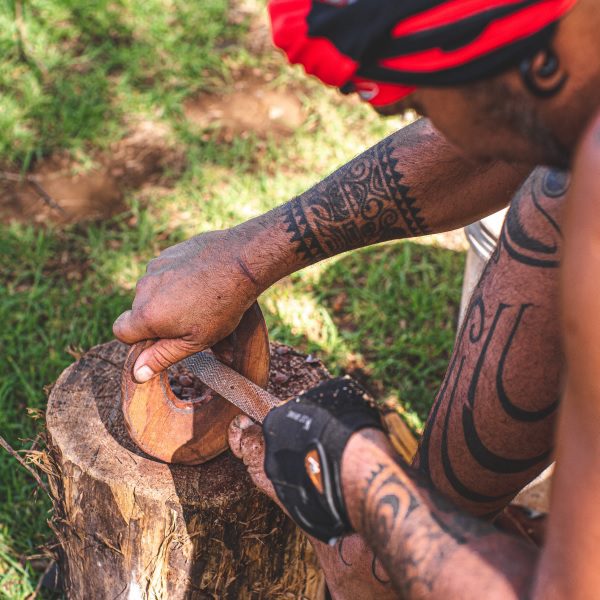Tapati Rapa Nui: A journey through the incredible ancestral culture of Easter Island
Between heroic competitions, painted bodies and dazzling dances, the Rapa Nui culture has managed to preserve a significant proportion of its ancient traditions through a festival that promises to immerse visitors and explorers in one of the most important celebrations in Polynesia. Its history, preparation and legacy bring to life a local culture united and committed to its past.
By Ladera Sur.

During the first 15 days of February, all the inhabitants of Easter Island (or Rapa Nui Island as it is called by its indigenous inhabitants, meaning literally ¨Big Island¨), come together to celebrate the Tapati Rapa Nui festival. This is the moment that the great traditional culture of the island is invoked, bringing out the best in each local family as they compete to crown their queen, compete amicably and share rich traditions with visitors.
The fruition of this festival is the product of a full year of arduous preparations, family commitment and the work of local inhabitants who seek to conserve and promote the culture of this unique Pacific Ocean island.
A revaluation of the Rapa Nui culture
The volcanoes, the crystal-clear waters and the impressive archaeology of the island bore witness to the birth of this festival, originally inspired by the culture of the South American continent in 1968. In its earliest iterations, it was first imagined as a spring festival, to be celebrated in September.
“The festival has its roots in traditional spring festivals from rural South American cities, where a queen was crowned. On Rapa Nui that was then adapted according to island traditions with an eye to how foreign concepts could be adopted beneficially for the territory,” says Cristián Moreno Pakarati, historian and expert on Rapa Nui.
Competitions from the continent, such as sack races and “the greasy stick” were quickly translated into formats that suited Rapa Nui culture. Other examples include the Haka Honu competition (where you swim in imitation of the movement of turtles); or the Haka Ngaru, (a rudimentary type of surfing using a board woven with materials native to the island.
A short time later, the celebration that had set out to celebrate spring, changed its date to February and its name to Tapati Rapa Nui, whose literal meaning is “Rapa Nui Week”. The coronation of the queen and the competitions were faithfully maintained.

“The competitions began to take on an ancestral culturally-restorative role from 1975 onwards with the work of the Mata Tu’u Hotuiti. This group promoted performing arts in the ancient ancestral Rapa Nui style, with traditional dress and a focus on ancient oral traditions”, explains Moreno.
It wasn’t just the sport, the clothing and the ancient recitals that revived the past of the island. The festival was the opportunity to shine a light on its cuisine, dance and traditional cultural crafts such as stone carving, wood carving, crown making and the Kai Kai or string game, as well as body painting.
“Body painting and extreme competitions such as the Haka Pei, which consists of sliding down the near vertical slope of Maunga Pu’i on banana trunks, are things that have no reason to exist in a modern society. Yet they continue to be done because it is part of the local culture; because people perceive that their own culture is their legacy and is what makes them unique. This is all based on the respect and recognition we have for our ancestors. Thanks to Tapati we continued to move forwards and revived things that were almost lost”, adds the historian.
Tapati: A great cultural festival
In Tapati’s modern format, two candidate queens and their respective teams participate in competitions and games, dances and choreography as well as the making of costumes, jewels and crowns. Each candidate’s representatives provide support to their queen in these events carried out between the volcanoes, hills and the shores of Rapa Nui.
“It takes the families of the candidates almost a year to prepare for the competitions, especially the dance ones. For these, the island is divided into two groups, united under the banner of their chosen queen. Each group rehearses together for least one month before the party. In addition, there are carnival floats with allegorical meaning to be crafted. Each candidate queen makes her own crown. The dance coaches need to have serious attitude”, explains Mea-Mea Haoa Tuki, a guide at Explora Rapa Nui and part of the Tapati Rapa Nui staff.
The two respective masters of ceremonies are an essential component of the festival. In order to faithfully represent Rapa Nui culture on the stage they receive special consul from experts weeks in advance.

“When I started to work at Tapati, the organisers set us up with experts who gave advice about how to engage people when on the stage and everything that the job might involve”, says Haoa Tuki, who has worked the crowds at Tapati four times, including in 2022.
In addition to all the sport and artistic competitions, the penultimate day of Tapati culminates in a dramatic carnival procession complete with dancers and floats, known as Nari Nari. It runs from the main streets of Hanga Roa to Hanga Vare Vare, the cultural center of the island.
“The island is paralyzed, since everyone is taking part in the party. Even tourists are wrapped up in the energy. They can even participate, especially on the allegorical floats where they are invited to partake in the local traditions”, says the Explora guide.
An opportunity to delve into the Rapa Nui culture
The draw of the ancestral Rapa Nui culture is no surprise. Its call is primordial. It takes us back to our most instinctual understanding of ourselves as human beings. According to the historian Cristián Moreno Pakarati, these concepts are manifested through the art and local creativity expressed during Tapati.
“Thanks to this festival, the traditions that had been almost forgotten or were about to be forgotten are beginning to be communicated once again. People have a reason to revisit these practices that were about to be forgotten,” explains the historian.
Today, there is increasing interest in Rapa Nui, its people and its history. Tapati is the perfect opportunity to participate in the local culture, celebrate the Rapa Nui people and soak up the energy of the festival.
“It is an emotive experience to see the energy of the local culture and to observe how the people who come to visit the island are eager to learn. The Rapa Nui culture has a magnetic quality. Despite being a small island with a diminished population, it has positioned itself as an icon on the global stage”, according to Cristián Moreno Pakarati.
These two weeks of festival seek to show the world the power of Rapa Nui and the legacy of its ancient traditions. It is a unique experience that invites the uninitiated to delve into a culture that has its origins in the year 600 on a small and paradisiacal island.

